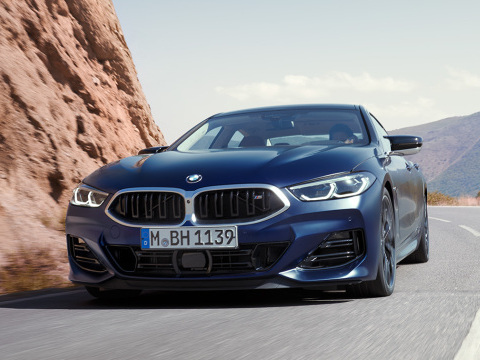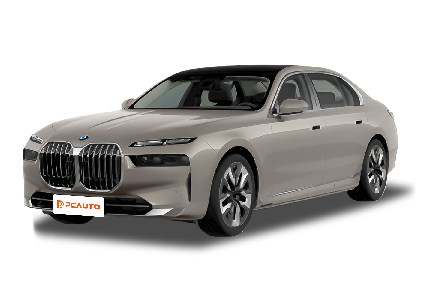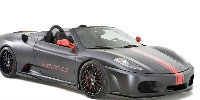Q
What is the Reslae Value of BMW I7?
As the flagship electric model of the brand, the second-hand value of the BMW i7 in the Malaysian market is affected by multiple factors, including battery health, mileage, configuration level, and warranty period. Generally, the depreciation rate of electric vehicles is slightly higher than that of fuel-powered vehicles. However, thanks to its high-end positioning and brand premium, the i7 can still maintain a relatively stable residual value. According to industry experience, the residual value rate of luxury electric vehicles after three years is approximately 50% - 60%. However, the specific value depends on the vehicle's condition and market demand. It is recommended to obtain a more accurate valuation through the official certified pre-owned program (BMW Premium Selection). Such channels usually offer extended warranties and battery protection, which helps to enhance the second-hand value.
Malaysian consumers also need to note that tax incentives for electric vehicles (such as import tax exemptions) may indirectly affect second-hand pricing. Meanwhile, regular maintenance records and the integrity of original parts are also key evaluation factors. If you're considering reselling the vehicle, it is advisable to keep a complete service history and utilize BMW Malaysia's used car evaluation tool. The rapid iteration of electric vehicle technology may cause early versions to depreciate faster. Therefore, when holding the vehicle for a long time, you need to weigh the relationship between technological updates and value retention.
Special Disclaimer: This content is published by users and does not represent the views or position of PCauto.
Related Q&A
Q
What Segment is BMW I7?
The BMW i7 is positioned in the luxury segment. As a luxury electric vehicle, it seamlessly combines BMW's renowned engineering excellence with advanced electric drive technology. The car is priced at 707,250 Malaysian Ringgit and offers a range of high - end features.
The vehicle has an enormous body size, measuring 5391 mm in length, 1950 mm in width, and 1544 mm in height, along with a generous wheelbase of 3215 mm. Inside the cabin, electric seats are provided for the driver, front - row passengers, and rear - row occupants to ensure a comfortable experience. A 14.9 - inch touch - controlled audio display and 18 Bowers & Wilkins speakers together create an immersive entertainment experience.
In terms of safety features, the vehicle is equipped with a comprehensive protection system that includes 7 airbags, an anti - lock braking system, and stability control. Two high - performance electric motors can produce 544 horsepower, enabling the car to accelerate from 0 to 100 km/h in just 4.7 seconds. The official pure - electric driving range reaches 615 km, which can meet both daily commuting needs and long - distance travel requirements. All these characteristics fully demonstrate the luxury positioning of the BMW i7.
Q
What is the PCD Size of BMW I7?
The PCD (Pitch Circle Diameter) of the BMW i7 is 5x112, which means the five bolt holes on the wheel hub are distributed on a circle with a diameter of 112 millimeters. This specification is consistent with that of the fuel - powered version of the BMW 7 Series and is suitable for wheels with a center hole diameter of 66.6 millimeters. For Malaysian car owners, it's very important to know the PCD size as it's directly related to the wheel compatibility. If you need to replace or upgrade the wheels, you must ensure that the PCD, center hole, and offset (ET value) of the new wheels match the original factory data. Otherwise, it may affect driving safety or cause the vehicle to shake.
In addition, the climate in Malaysia is hot and rainy. It's recommended to choose wheel materials that are lightweight and have good heat dissipation, such as aluminum alloy, to improve the vehicle's range and reduce the thermal attenuation of the braking system. If you need to further confirm the specifications, you can refer to the vehicle user manual or consult a BMW - authorized dealer. They can provide original factory parts or certified modification solutions to ensure compliance with local road regulations.
Q
Does BMW I7 Support Apple Carplay?
Yes, as the brand's flagship electric vehicle, the BMW i7 comes standard with Apple CarPlay across the entire lineup. It can seamlessly meet the in - car entertainment needs of iPhone users. Wireless screen mirroring can be achieved through the central curved screen or the rear - seat floating screen, supporting core applications such as navigation, music, and calls. For Malaysian users, all i7 models sold locally are compatible with this function. However, it should be noted that the in - car system needs to be updated to the latest version to ensure stability. At the same time, it is recommended to use the original data cable or keep the phone's Bluetooth/Wi - Fi connection normal.
In addition, BMW's intelligent connectivity system also integrates functions such as Android Auto, wireless charging, and voice control, which complement Apple CarPlay. In Malaysia's hot climate, when using in - car electronic devices for a long time, it is recommended to regularly check for system updates and avoid exposure to high temperatures to extend the lifespan of the hardware. If you encounter connection problems, you can go to BMW - authorized service centers in places like Kuala Lumpur or Penang for diagnosis, and the technicians will provide professional support.
Q
What is the Tyre Brand of BMW I7?
As the flagship electric model of the brand, the original - equipped tire brands of the BMW i7 vary according to different markets and configurations. In the Malaysian market, the commonly - paired tires include high - end brands such as Bridgestone, Michelin, or Goodyear. The electric - vehicle - specific tires provided by these brands (such as Michelin Pilot Sport EV or Bridgestone Turanza Eco series) can balance quietness, low rolling resistance, and grip, which are particularly suitable for the high - torque characteristics of electric vehicles. It's worth noting that there are design differences between electric - vehicle tires and traditional tires. Usually, the sidewall support is strengthened to bear the extra weight of the battery pack, and special rubber compounds are used to reduce energy consumption. It is recommended that car owners give priority to models with the EV logo when replacing tires. If you need to confirm the specific configuration, you can check the nameplate on the B - pillar of the vehicle or query the original - factory specifications through the official website of BMW Malaysia. Regularly checking tire pressure and wear conditions is particularly important for maintaining the cruising range. The local hot and rainy climate also makes summer tires with excellent drainage performance more suitable.
Q
Is BMW I7 a Good Car? Learn the Pros and Cons Here!
As the flagship electric sedan of the brand, the BMW i7 has demonstrated excellent product strength in the Malaysian market. Its advantages include the advanced fifth - generation eDrive electric drive system, which offers a WLTP range of over 600 kilometers (the actual range is affected by driving habits and climate). Paired with a dual - motor all - wheel drive system, it can accelerate from 0 to 100 km/h in just 4.7 seconds, showing powerful performance. Meanwhile, it retains the luxury genes of the 7 Series, such as the crystal ambient lighting and the 31 - inch rear - seat theater screen. It is suitable for high - end Malaysian users who pursue technology and comfort.
However, it's necessary to pay attention to the battery thermal management performance of electric vehicles in tropical regions. Although BMW is equipped with an intelligent temperature control system, long - term high - temperature environments may slightly affect the charging efficiency. Compared with its competitors in the same class, the i7's fast - charging technology (it takes about 34 minutes to charge from 10% to 80% of the battery) and the adaptive energy recovery system are quite friendly for the frequent urban commuting scenario in Malaysia. But it is recommended that potential buyers experience on - site the headroom performance of the rear seats for passengers over 175 cm tall.
Overall, if you have a sufficient budget and home - charging conditions, the i7 is a high - quality choice that combines luxury and environmental protection. However, you need to weigh its relatively high price against the progress of the local electric - vehicle infrastructure.
Q
What is the Width of BMW I7?
The width of the BMW i7 is 1,950 millimeters. This dimension significantly enhances the overall presence and interior spaciousness of the vehicle. A wider body generally means more generous space for passengers, enabling a more comfortable and luxurious cabin layout. At the same time, it also improves the vehicle's driving stability, as a wider wheelbase usually offers better balance. Moreover, this width also influences the vehicle's aesthetic performance, endowing it with a sleek and imposing visual effect. When combined with other dimensional parameters such as length and height, the width of the BMW i7 perfectly achieves a harmonious integration of functionality, comfort, and design aesthetics.
Q
What is the Road Tax Price of BMW I7? How to Calculate It?
In Malaysia, as a pure - electric luxury sedan, the Road Tax for the BMW i7 is different from that of fuel - powered vehicles. Electric vehicles currently enjoy a tax - exemption privilege provided by the government, so there's no need to pay Road Tax. This policy will remain in effect until December 31, 2025, aiming to encourage the popularization of electric vehicles. If the policy is adjusted in the future, the Road Tax calculation method might be based on the electric motor's power (kW) or the vehicle's weight. You can refer to the electric vehicle Road Tax standards announced by JPJ (Land Public Transport Agency) for the specific formula.
It's important to note that the Road Tax for fuel - powered vehicles is usually calculated based on the engine capacity (cc). For example, the tax rates are different for vehicles with an engine capacity below and above 2000cc, but this rule doesn't apply to electric vehicles.
In addition, car owners still need to renew their Road Tax and vehicle insurance on time. The insurance cost for electric vehicles may be slightly higher than that for fuel - powered vehicles because of the higher maintenance costs. It is recommended to regularly check the latest policies on the JPJ website or the official BMW Malaysia website to ensure compliance.
Q
What is the Second Hand Price of BMW I7? Check Used Price Here
Regarding the used car prices of the BMW i7 in Malaysia, the specific value is influenced by factors such as the vehicle's age, mileage, condition, configuration version, and market demand. Generally, the price of a used i7 is about 20% to 40% lower than that of a new one. It is recommended that you check the real - time quotes through local used car platforms like Carlist or Mudah. You can also consult authorized BMW dealers for a more accurate valuation.
As the brand's flagship electric vehicle, the BMW i7 is equipped with advanced electric drive technology and luxurious features. For example, it has the fifth - generation eDrive system, a large curved screen, and advanced driving assistance functions, all of which affect its resale value. In the Malaysian market, the used prices of electric vehicles fluctuate significantly, partly due to the popularity of charging infrastructure and concerns about battery degradation. However, thanks to BMW's brand premium and solid craftsmanship, the i7 maintains a relatively stable resale performance.
If you're considering buying a used i7, make sure to check the battery health report and warranty status. Also, compare the prices and services of different sellers to ensure you get the best deal.
Q
What is the Tyre Pressure of BMW I7?
As a pure-electric luxury sedan, the recommended tire pressure values for the BMW i7 are typically marked on the label of the driver's side door frame or in the vehicle's user manual. The specific values may vary depending on the vehicle configuration (such as wheel hub size) and load conditions. For example, under standard conditions, the front tires are around 2.4 - 2.5 bar, and the rear tires are around 2.6 - 2.7 bar. If the vehicle is often fully loaded, the pressure should be increased by 0.2 - 0.3 bar as recommended in the manual.
For Malaysian car owners, the tropical climate may cause the tire pressure to increase as the temperature rises. It is recommended to check the tire pressure monthly under cold tire conditions (after the vehicle has been parked for 3 hours or has traveled less than 2 kilometers), and use a digital tire pressure gauge to ensure accuracy. Also, note that overly high tire pressure will reduce grip, while overly low pressure will increase energy consumption and the risk of tire blowouts. Tire pressure management is particularly crucial for electric vehicles because the weight distribution of the battery pack is different from that of traditional fuel vehicles, and the driving range is more sensitive to rolling resistance.
If you replace the tires with silent or low-rolling-resistance ones, you still need to follow the original tire pressure standards. Any adjustments should be based on BMW's official data. The service stations or authorized dealers can provide free tire pressure testing services.
Q
What is the Weel Size of BMW I7?
The wheel size of the 2023 BMW i7 XDrive60 is 20 inches. The front tire specification is P255/45HR20, and the rear tire specification is P285/40HR20. Wheel size is an important factor that affects vehicle performance and appearance. Larger wheels can enhance handling and give the vehicle a more impactful visual effect, but they may also affect ride comfort and fuel efficiency. Different wheel and tire combinations are designed to suit diverse driving needs and vehicle characteristics. The exclusive wheel and tire configuration of the BMW i7 has been carefully tuned to complement its luxurious nature and high - performance capabilities, providing a smooth and stable driving experience.
Latest Q&A
Q
What is the top model of Toyota Yaris 2019?
The top trim of the 2019 Toyota Yaris is the 1.5G variant. It's powered by a 1.5-liter Dual VVT-i naturally aspirated engine that cranks out 107 horsepower, paired with a 7-speed CVT transmission for a smooth driving experience and solid fuel efficiency. This trim comes standard with LED headlights, a smart key system, automatic climate control, and a 7-inch touchscreen infotainment system that supports Apple CarPlay and Android Auto, boosting both tech appeal and convenience. On the safety front, the 1.5G is equipped with vehicle stability control, six airbags, and a reverse camera to keep you secure on the road. As the flagship of the Yaris lineup, the 1.5G steps up its game in comfort and functionality, making it a solid pick for shoppers after a high-quality subcompact. It's worth noting that the Yaris has long been known globally for its reliability and low maintenance costs, and the 2019 model gets tweaks to handling and sound insulation, further cementing its competitiveness in the segment.
Q
What are the trim levels for the 2019 Toyota Yaris?
The 2019 Toyota Yaris was available locally in three main trim levels: 1.5E, 1.5G, and 1.5V. All came equipped with a 1.5-liter Dual VVT-i naturally aspirated engine paired with a 7-speed CVT transmission. The base 1.5E came standard with LED daytime running lights, manual air conditioning, and a 2-DIN audio system. Stepping up to the 1.5G added smart keyless entry, push-button start, and 15-inch alloy wheels. The top-of-the-line 1.5V rounded things off with automatic climate control, a leather-wrapped steering wheel, and paddle shifters. It's worth noting that this Yaris featured Toyota's latest GOA body technology, and across the entire lineup, you got seven airbags, VSC vehicle stability control, and HAC hill-start assist as standard safety kit. If you're considering a used one, make sure to check the CVT transmission fluid change records and the condition of the undercarriage—this powertrain is pretty sensitive to regular maintenance. While competitors like the Honda Jazz offer more flexible interior space, the Yaris leans more towards comfort with its noise insulation and chassis tuning, making it a solid pick for daily city driving.
Q
What is the mileage of Toyota Yaris 2019?
The fuel efficiency of the 2019 Toyota Yaris varies depending on the trim and powertrain. The version with the 1.5-liter naturally aspirated engine averages around 6.5 L/100km in city driving, dropping to roughly 5.0 L/100km on the highway. The hybrid model is even thriftier, with a combined fuel consumption of about 4.0 L/100km. Actual numbers might fluctuate slightly based on driving habits and road conditions.
This car has gained popularity for being economical and practical, making it a solid pick for daily commutes and family use. Maintenance costs are relatively low, parts are readily available, and repairs are hassle-free. For shoppers who prioritize fuel economy, the Yaris is a great option—plus, its reliability and durability have been proven in the market, saving you money over the long haul. To squeeze out even better mileage, keeping your tires properly inflated and avoiding hard acceleration or sudden braking can go a long way in boosting fuel efficiency.
Q
How big is the gas tank on a 2019 Toyota Yaris?
The 2019 Toyota Yaris comes with a 42-liter fuel tank, a design that meets daily commuting and short to medium-distance travel needs, balancing fuel efficiency with practicality. Powered by a 1.5-liter naturally aspirated engine paired with a CVT transmission, this model delivers a combined fuel consumption of approximately 5.2 liters per 100 kilometers, meaning a full tank theoretically offers a range of around 800 kilometers. It's worth noting that the actual usable tank capacity might be slightly less than the rated value; this is a standard industry practice to leave safe space for fuel expansion. We recommend drivers refuel when the fuel level drops to 1/4 to prevent premature wear on the fuel pump from prolonged operation at low levels. For more precise tank specifications, check the vehicle owner's manual or use the fuel gauge reset method for actual testing. Additionally, regular maintenance of the fuel system can effectively maintain tank cleanliness and fuel supply efficiency.
Q
What oil does a 2019 Toyota Yaris take?
The 2019 Toyota Yaris recommends using fully synthetic 0W-20 motor oil that meets API SN or higher standards. This low-viscosity oil optimizes cold-start protection and improves fuel efficiency. If this specific viscosity isn't readily available, 5W-30 can be used as a substitute, though you might notice a slight increase in fuel consumption. For maintenance, it's advised to change the oil every 10,000 kilometers or 6 months, whichever comes first. In hot climates or with frequent short trips, you may want to shorten the oil change interval a bit. A key point to note: some models with the 1.5L 2NR-FE engine equipped with a start-stop system must use "Resource Conserving" labeled fuel-efficient oil to ensure proper system operation. When choosing oil, prioritize products that meet the Toyota-certified ILSAC GF-5 standard. These oils have a more balanced additive package, effectively preventing low-speed pre-ignition and protecting the emission control system. If your vehicle is still under warranty, it's best to use the original factory oil to avoid warranty disputes. Also, regularly check the oil dipstick to ensure the level is within the normal range—excessive oil consumption could be an early sign of aging piston rings or valve seals.
View MoreRelated News

Neue Klasse platform's first mass-produced vehicle, the all-new BMW iX3 makes its debut, looks just like a concept car
LienSep 8, 2025

BMW X5 will become BMW's first model equipped with a hydrogen fuel cell, with a range of 504 kilometers
JamesSep 8, 2025

BMW's all-new iX3 to be unveiled on September 5, built on the Neue Klasse platform
Kevin WongSep 1, 2025

BMW to Debut Limited-Edition 8 Series at Monterey Car Week
AshleyJul 31, 2025

Meet the New BMW M5 G90: Rear-Wheel Steering & RM1.18M Price Tag
AshleyJun 16, 2025
View More


















Pros
Cons